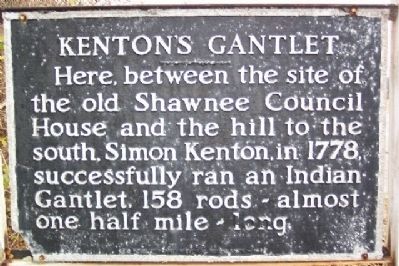 A History of Jonathan Alder: His Captivity and Life with the Indians by Larry Nelson
A History of Jonathan Alder: His Captivity and Life with the Indians by Larry NelsonMy rating: 5 of 5 stars
I can't believe I just got around to reading this book that I've seen sourced in other history books many times. I've read a few other captivity narratives but this one is right up my alley in that it mostly happened in Madison County Ohio near Columbus. In fact, when I was in the middle of reading it, I happened to be off work for Christmas break so I took advantage of that timing and combined my hobby of geocaching and made the 90-minute drive to visit some of the places mentioned, including Alder's 210-year-old cabin and final resting place. It's always great when history becomes a hands-on experience.
 |
| Alder's 1806 cabin in Madison County |
Alder voluntarily left his adopted Mingo family in 1805 as white settlers arrived after the Treaty of Greenville. He reunited with his birth family in Virginia and returned to Ohio with them and his new wife 1806. He served as a Captain in the War of 1812. After the war, he became a farmer and befriended the famous pioneer Simon Kenton. Alder lived out his days in Madison County Ohio until his death in 1849.
We learn so much about regular life as an Indian in Ohio in the early 19th century from Alder's excellent narrative. Nelson also provides additional footnotes throughout the story that details further what Alder was referring to at times or what he meant when in the vernacular. Definitely, do not skip out on those notes if you get this version of the book.
 |
| Alder's grave in Madison County |
All in all, this is a very easy read and should be required reading for any student of the history of the early United States and the old Northwest Territory.
View all my reviews




